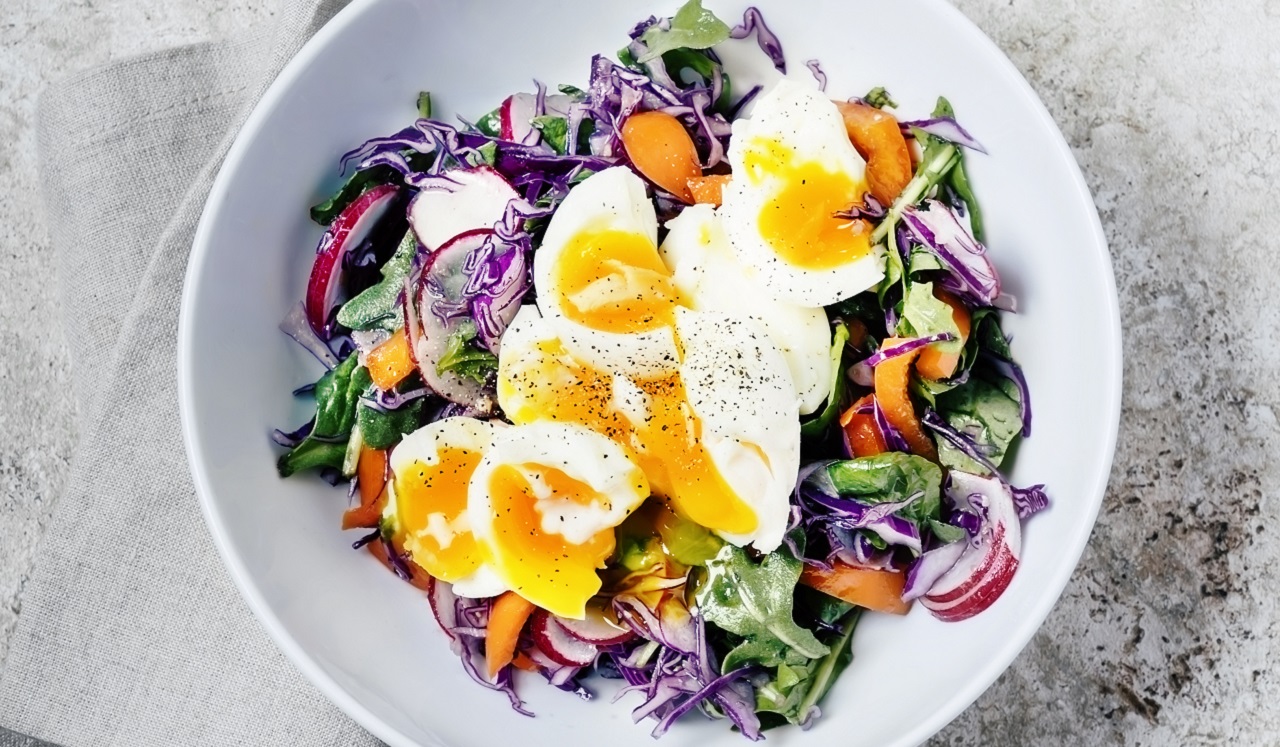Carnivore-friendly keto and plant-based vegetarian diets sound like rivals. Yet their union as the ketotarian diet has become the latest weight-loss wonder.
How do these opposites attract?
“This is a new take on the popular keto diet,” says Chelsea Cappelle Johnson, MS, RD, LD, CBC, Clinical Outpatient Bariatric Dietitian at Memorial Hermann Memorial City Medical Center.
Essentially the ketotarian diet is keto gone semi-vegetarian.
When merged, the diets become a high-fat, moderate-protein and low-carbohydrate plan that cuts meat, but not necessarily eggs, dairy or fish, Johnson says.
Your dietary portfolio raises your carbs to 15% (up from 5% for keto), with 60%-75%of calories from fat and the remainder from protein. The goal is to reach ketosis, where you empty your inner glucose accounts banked in your liver and muscles. That forces your body to burn fat – and that leads to weight loss and looser clothes.
Johnson provides her take on melding the high-protein keto plan with the nutrient-rich, plant-based plan many doctors and dietitians advocate.
What Can You Eat?
Non-starchy veggies such as artichokes, asparagus and greens; lower-fructose fruits such as berries, lemons, limes and oranges; and plant-based fats, such as nuts, coconuts, olives and avocados.
If you’re not fully vested in vegan or vegetarian eating, you can add fish or eggs.
There are lots of good, nutritional foods you can’t have.
“Like keto, this diet is pretty restrictive,” Johnson says. “You’re still eliminating nutritional, plant-based foods.”
What Is Off The Menu?
Not only must you shed dairy, bacon and burgers (sorry!), but you also must avoid grains, legumes (lentils, beans and peanuts), starchier vegetables (potatoes, corn and peas) and fructose- or carb-rich fruits (mangoes, apples, watermelons, bananas and grapes).
“There are lots of good, nutritional foods you can’t have,” Johnson says. “I don’t see any reason -- ever -- to restrict fruits unless you have a specific medical condition.”
How Doable Is The Diet?
It’s possible short-term, but not necessarily long term.
“It’s overly restrictive. Eating on the go or at restaurants, as many of us do, would be tricky,” she says. “Plus, protein and grains help you stay and feel full.”
Will The Diet Work? Will You Lose Weight?
Yes, claims ketotarianism creator Will Cole, DC, functional medicine practitioner and author of Ketotarian: The (Mostly) Plant-Based Plan to Burn Fat, Boost Your Energy, Crush Your Cravings, and Calm Inflammation (Avery, 2018).
According to Johnson the diet may only succeed sometimes. “Every person’s body is different,” she says. “Some people will do well with high carbs and some people will work well with low carbs. If you’re on the typical American diet high in meat, dairy, carbs and starches, you lose weight pretty quickly at first.
“Keeping it off isn’t as likely because this diet is hard to sustain,” she adds. “You miss some good stuff and feel deprived.”
How Safe Is It?
Generally, doctors and dietitians urge pregnant or breastfeeding women, children, the elderly and the chronically ill to avoid keto.
High-fat and keto diets often are discouraged for those with high cholesterol, diabetes or heart disease. “Since this is plant-based it might be less worrisome, but we don’t know enough to be sure,” Johnson says.
Ketotarians who are used to high protein and high fat may experience common keto side effects of constipation, brain fog, headaches, fatigue and “keto breath.”
How Long Should You Stay On The Diet?
Trimming grains and fruits from the diet also shaves vitamins, minerals and other nutrients. Keeping eggs and fish on the menu makes it easier to get enough protein. Still, cutting dairy and meat may cause deficiencies in iron and zinc.
“Our body’s vitamin stores can last two weeks,” Johnson says. “After that you may get signs of deficiencies.”
Is This The Ultimate Weight-Loss Rx?
Alas, no. “You lose weight really quickly on extreme diets, but when you return to old habits, the pounds come back,” she says.
Gradually cutting portions and padding fruit, vegetable and whole grain consumption is more effective. “One or two small changes at a time make dieting a slower battle, but it puts less stress on the body – and is more sustainable.”
Get Your Daily Dose of Health & Wellness
Sign up to receive the latest articles in your inbox.


